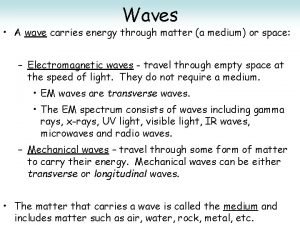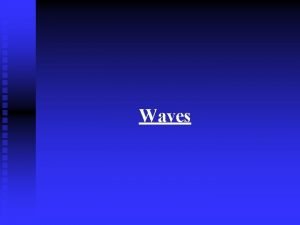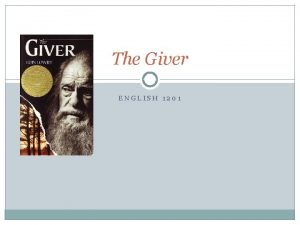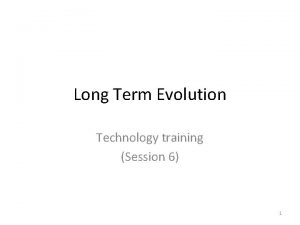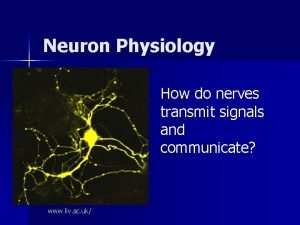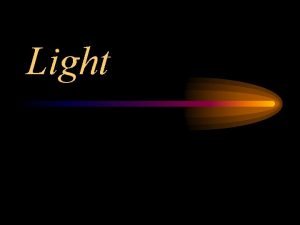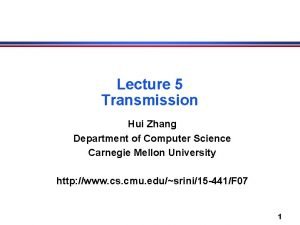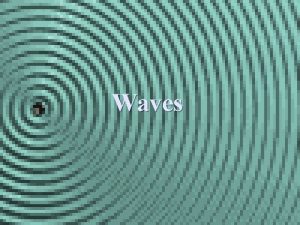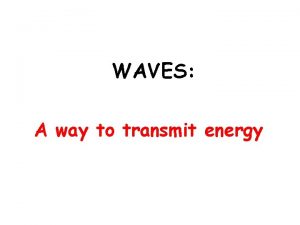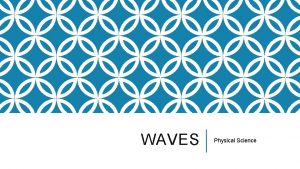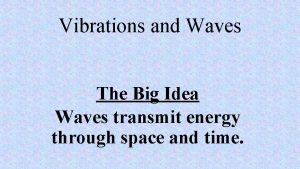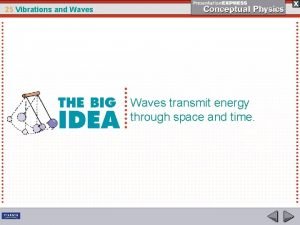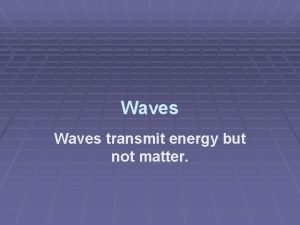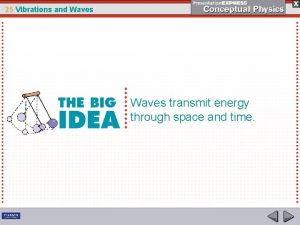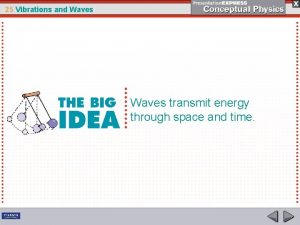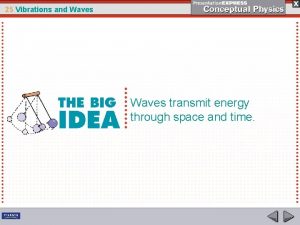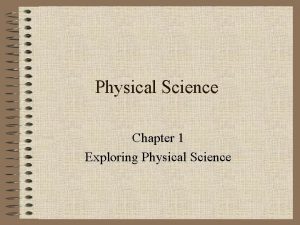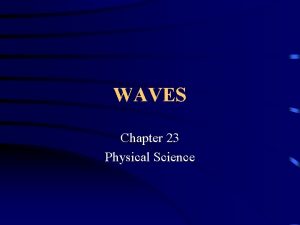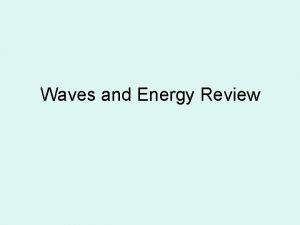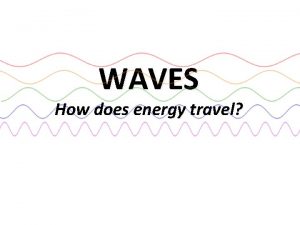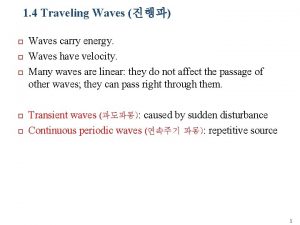Physical Science CHAPTER 23 Waves Waves transmit energy

























- Slides: 25

Physical Science CHAPTER 23 Waves

Waves transmit energy!!! Mechanical Vs. Electromagnetic Waves

Mechanical Waves Need medium (gas, liquid, solid) Examples: Sound, water waves

Electromagnetic Waves No medium needed. Example: Visible Light (ROYGBIV), Ultraviolet, Infrared, Microwaves, etc…

http: //www. lbl. gov/Micro. Worlds/ALSTool/EMSpec 2. html

3 main characteristics of all Waves 1. Amplitude (high amplitude means high energy) 2. Wavelength (Unit: meters) 3. Frequency Units: cycles/sec Waves/sec 1/s Hertz (Hz)

Frequency Example Problem 1. A boy standing on a dock counts 20 waves pass by in 5 seconds. What is the frequency of the waves? f = #waves / time 20 waves / 5 seconds = 4 Hz

Frequency Example Problem #2 2. If the frequency of the waves is increased to 8 Hz, how many waves will pass by the boy in 2 seconds? f = #waves / time 8 Hz = #waves / 2 seconds 8 Hz x 2 seconds = 16 waves

MECHANICAL WAVES (2 TYPES) TRANSVERSE WAVES LONGITUDINAL WAVES

SURFACE WAVES http: //www. gmi. edu/~drussell/Demos/wavemotion. html

TRANSVERSE WAVE

LONGITUDINAL WAVE

SPEED OF WAVES speed = frequency x wavelength v = f x λ Example #1 A wave on a lake is traveling with a velocity of 8 m/s. the frequency is 2 Hz. What is the wavelength of this wave? 8 m/s = 2 Hz x λ λ = 4 m

The Type Of Medium Determines the Speed of The WAVE!! Higher Density = Slower Speed of Wave Higher Elasticity = Faster Speed of Wave

THE 4 BASIC WAVE INTERACTIONS ARE: 1. REFLECTION 2. REFRACTION 3. DIFFRACTION 4. INTERFERENCE

1. REFLECTION Bouncing back of waves upon reaching another surface.

THE LAW OF REFLECTION STATES THAT THE ANGLE OF INCIDENCE IS EQUAL TO THE ANGLE OF REFLECTION.

2. REFRACTION Bending of waves due to a change in speed.

3. DIFFRACTION Bending of waves around the edge of an obstacle.

4. INTERFERENCE 1. CONSTRUCTIVE INTERFERENCE When waves combine and produce a wave that is greater than either of the waves alone.

2. DESTRUCTIVE INTERFERENCE When waves combine and produce a wave that is less than either wave alone.

Applet Interference by 3 waves simultaneously. http: //www. chipr. sunysb. edu/eserc/Project. Java/Wave. Interaction. Applet/ Another wave website to look at: http: //www. howe. k 12. ok. us/~jimaskew/pwave. htm

STANDING WAVES RESONANT FREQUENCY (or natural frequency) The frequency at which a standing wave occurs.

RESONANCE The ability of an object to vibrate by absorbing energy of its own natural frequency. Video clip of the Tacoma Narrows Bridge November 1940 http: //www. gmi. edu/~drussell/Demos. html

NODES Stationary points of a standing wave. ANTINODES Loops of a standing wave where maximum oscillation of the medium occurs.
 Type of wave
Type of wave Transmit waves
Transmit waves Mechanical and electromagnetic waves venn diagram
Mechanical and electromagnetic waves venn diagram Brances of science
Brances of science Natural science vs physical science
Natural science vs physical science What's your favourite subject?
What's your favourite subject? The giver synopsis
The giver synopsis Deoxyribose nucleotide
Deoxyribose nucleotide Transmit diversity in lte
Transmit diversity in lte Neuron physiology
Neuron physiology Rolul dialogului
Rolul dialogului Automatic transmit power control
Automatic transmit power control Transmit light
Transmit light Hui transmit data
Hui transmit data Energy energy transfer and general energy analysis
Energy energy transfer and general energy analysis Energy energy transfer and general energy analysis
Energy energy transfer and general energy analysis Differences between mechanical and electromagnetic waves
Differences between mechanical and electromagnetic waves Longitudinal wave vs transverse wave
Longitudinal wave vs transverse wave Examples of mechanical waves
Examples of mechanical waves Difference between electromagnetic and mechanical waves
Difference between electromagnetic and mechanical waves The wave chapter 13
The wave chapter 13 Sound is a longitudinal wave
Sound is a longitudinal wave What is a semiconductor used for
What is a semiconductor used for Mechanical waves and electromagnetic waves similarities
Mechanical waves and electromagnetic waves similarities Mechanical vs electromagnetic
Mechanical vs electromagnetic Mechanical and electromagnetic waves similarities
Mechanical and electromagnetic waves similarities
